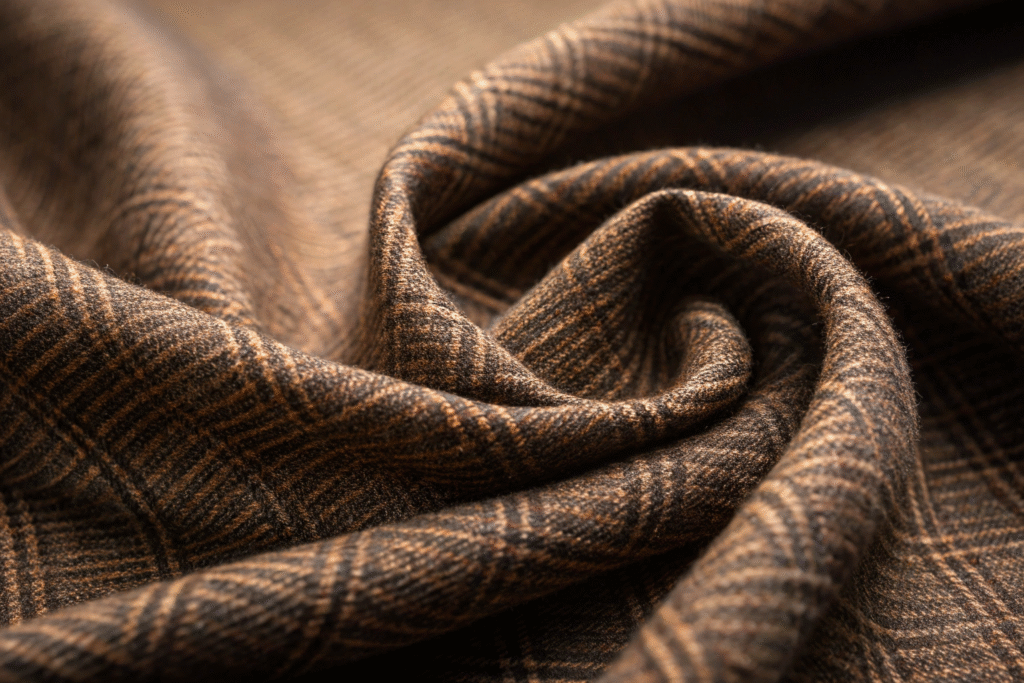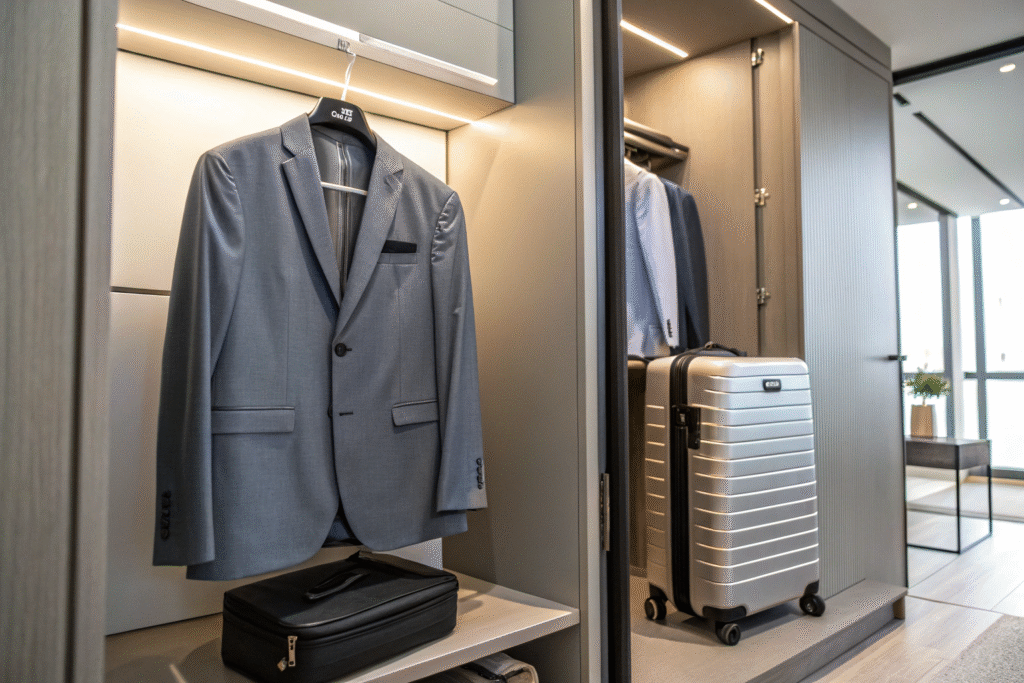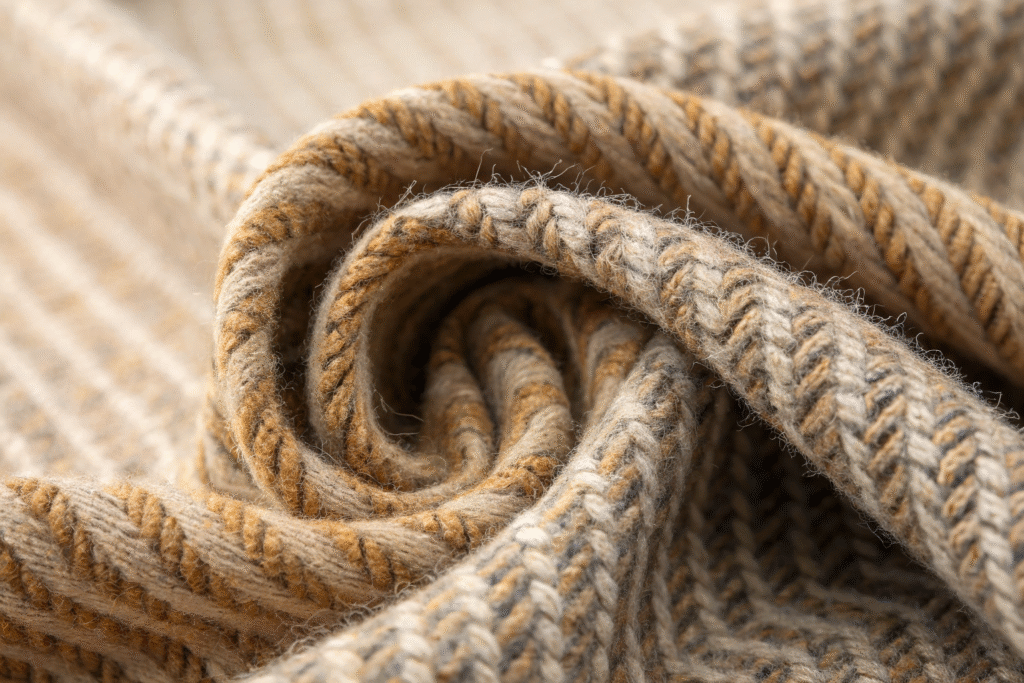Choosing the right fabric for your suit line is a critical decision. It impacts everything from customer perception to your bottom line. As an apparel manufacturer, we know that selecting between natural fibers like wool and synthetic options like polyester blends is a common dilemma for our brand partners. This choice defines the suit's quality, durability, and overall value proposition.
The best fabric for suits depends on your target market, price point, and desired garment performance. While premium wool offers superior breathability, drape, and a natural sheen, high-quality polyester blends provide exceptional durability, wrinkle resistance, and cost-effectiveness for a broader audience. Understanding the distinct advantages of each will empower you to make an informed sourcing decision that aligns with your brand's identity and your customers' expectations.
Let's dive deeper into the specifics of each fabric to help you determine the ideal choice for your next suit collection.
What are the key advantages of wool suits for my brand?
Wool has been the gold standard for suiting for generations, and for good reason. It offers a combination of natural properties that are difficult to replicate with synthetic fibers. If your brand positioning revolves around luxury, comfort, and natural materials, wool is likely your best bet.
Wool's primary advantages include its exceptional breathability, natural temperature regulation, and superior drape. These characteristics directly contribute to a high-end perception, allowing you to command a premium price point in the competitive U.S. market. Brands focused on quality and customer satisfaction often find that wool suits lead to higher customer loyalty and fewer returns due to comfort issues.

Why does wool offer better breathability and comfort?
Wool is a natural fiber that can absorb moisture vapor without feeling wet. This makes wool suits incredibly breathable. They help regulate body temperature, keeping the wearer cool in summer and warm in winter. This inherent climate control is a significant selling point. In contrast, many synthetic fabrics trap heat and moisture. This can lead to discomfort during extended wear. For your customers who value all-day comfort, this is a crucial factor. Furthermore, wool is naturally resistant to odors. This extends the time between dry cleanings, enhancing the garment's longevity. We source our wool from reputable mills that adhere to high animal welfare and sustainable practices, ensuring a premium product for your brand.
How can wool enhance my brand's premium image?
The drape of a fabric—how it falls and flows on the body—is paramount for a suit's silhouette. Wool possesses a weight and fluidity that create a clean, sharp, and elegant drape. This impeccable fit immediately signals quality to the end consumer. The rich, deep luster of wool also contributes to a sophisticated appearance that polyester struggles to match. By choosing wool, you are not just selling a suit; you are selling an experience of luxury. This aligns perfectly with brands targeting discerning professionals. Partnering with a manufacturer experienced in handling premium worsted wool ensures that this quality is consistently delivered across your entire production run.
What makes polyester blends a cost-effective choice?
Polyester blends are a powerhouse in the apparel industry, especially for brands targeting value-conscious consumers or requiring high-volume production. The evolution of polyester technology has led to fabrics that convincingly mimic the look of natural fibers at a fraction of the cost.
Polyester blends are renowned for their durability, wrinkle resistance, and low maintenance requirements. These practical benefits translate directly into lower costs for you and a user-friendly garment for your customer, making it an excellent choice for everyday wear or uniforms. For brands with a high turnover of styles or those operating in the fast-fashion segment, the economic advantages are substantial.

How do polyester blends improve durability and reduce costs?
Polyester fibers are incredibly strong and resistant to abrasion. This means suits made from polyester blends can withstand frequent washing and wearing without showing signs of wear as quickly as a pure wool suit. This durability is ideal for workplace uniforms or suits intended for daily use. From a manufacturing perspective, polyester is less expensive to produce than wool. This cost-saving is passed on to you, allowing for a healthier profit margin or a more competitive retail price. The stability of polyester also makes it easier to work with during the cutting and sewing process, reducing production delays and potential waste.
Are modern polyester blends still considered low quality?
This is a common misconception. While cheap, shiny polyester gives the fabric a bad name, high-quality polyester blends have come a long way. Modern textile engineering allows manufacturers to create blends with natural fibers like wool or rayon. These blends combine the affordability and resilience of polyester with the improved feel and drape of natural materials. For many of our brand partners, a 70/30 wool-polyester blend offers the perfect balance. It provides the premium look of wool with enhanced wrinkle resistance and a lower price point. This makes it a versatile option for a wider audience without significantly compromising on aesthetics.
How do I choose between wool and polyester for my target market?
The decision between wool and polyester is not just about fabric properties; it's about understanding your customer. Your target demographic, brand ethos, and sales channels should guide this critical choice.
Your choice should be a strategic business decision based on your customer's lifestyle, values, and spending habits. Analyze who you are selling to and what they prioritize—is it luxury and tradition, or practicality and value? Aligning your fabric selection with your brand story strengthens your market position.
| Customer Profile | Recommended Fabric | Key Reasoning |
|---|---|---|
| The Executive Professional | Premium Wool | Values premium quality, natural materials, and long-term investment pieces. |
| The Value-Conscious Buyer | High-Quality Polyester Blend | Seeks affordability, durability, and easy care for frequent wear. |
| The Fast-Fashion Consumer | Polyester or Polyester Blend | Prioritizes trendy styles at low prices and is less concerned with longevity. |
| The Eco-Conscious Client | Sustainable Wool or Recycled Polyester | Values environmental responsibility and ethical sourcing in the supply chain. |

What questions should I ask about my customer's lifestyle?
Start by defining your customer's daily routine. Do they work in a climate-controlled office, or are they on the move? Do they travel frequently for business? For a traveler, the wrinkle resistance of a polyester blend might be a major benefit. For a clientele that attends high-level meetings, the impeccable drape of wool is unbeatable. Also, consider your customer's values. An increasing number of consumers are making purchasing decisions based on sustainability. Offering options like recycled polyester or responsible wool can be a powerful differentiator.
How does my price point influence the decision?
Your target price point is a decisive factor. Wool, especially high-grade varieties, will inevitably command a higher factory price than polyester. If your business model, like Ron's, involves sourcing at competitive prices for redistribution in the U.S., a polyester blend may allow for the necessary margin. However, if your brand is built on a luxury foundation, investing in wool is essential to justify your premium positioning. It's about matching the cost of goods to the perceived value for the end-user.
Can wool and polyester be blended together?
Absolutely. Fabric blending is a common practice to create materials that harness the strengths of different fibers. A wool-polyester blend is a popular compromise that seeks to offer the best of both worlds.
A wool-polyester blend combines the premium feel and breathability of wool with the durability and wrinkle resistance of polyester. This hybrid approach is ideal for brands seeking a balanced option that appeals to a wide market segment without fully committing to either extreme. It's a practical solution for many of our clients.

What are the benefits of a wool-polyester blend?
The inclusion of polyester makes the fabric more resilient to stretching and shrinking, ensuring the suit maintains its shape over time. It also significantly reduces wrinkling, making the suit ideal for all-day wear or travel straight from a suitcase. The wool content ensures the fabric retains a natural luster and a softer hand feel than a pure synthetic. From a cost perspective, blends are more affordable than 100% wool, making them an attractive option for brands that want to offer a touch of luxury without a luxury price tag. This balance is often perfect for professional attire targeted at mid-level managers or recent graduates.
What blend ratios are most common and effective?
The most common ratios we produce are 80/20 (wool/polyester) and 70/30. An 80/20 blend will feel and perform very much like a pure wool suit but with added strength and a slight reduction in cost. A 70/30 blend will have more pronounced polyester benefits, like stronger wrinkle resistance, and a lower price, though the hand feel will be less soft. The right ratio depends on the specific balance of qualities you want to emphasize. We can guide you through sampling different blends to find the perfect match for your collection.
Conclusion
The debate between wool and polyester blends for suits doesn't have a single winner. The best fabric is the one that strategically aligns with your brand's goals, your target customer's needs, and your price point. Wool remains the undisputed champion for luxury, comfort, and a premium image. Polyester blends offer unmatched practicality, durability, and value for a broader audience. And for many, a smart blend of both fibers provides the ideal middle ground.
Making the right fabric choice is the first step toward a successful product line. The next, and equally important, step is partnering with a manufacturer who can execute your vision with precision and reliability. At Shanghai Fumao, we have the expertise to guide you through these material decisions and ensure top-quality production from sourcing to delivery. Let's discuss how we can bring your next suit collection to life. For a personalized consultation, please contact our Business Director, Elaine, at elaine@fumaoclothing.com.










